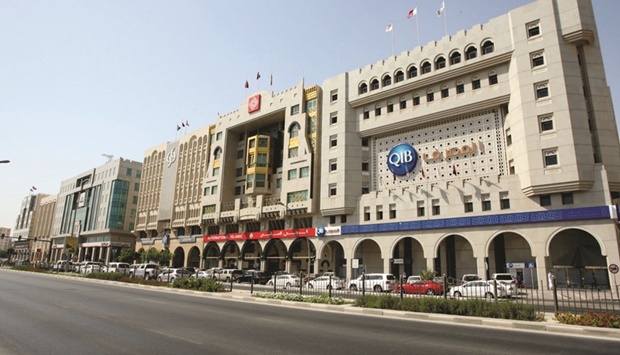The average share of bad loans to banks' total loan book stood at 2.7% in Qatar during the second quarter (Q2) of 2022, which is lower than the Gulf average of 3.4%, according to Kamco Invest.
Qatari banks had the highest cover against Stage 3 bad loans in the Gulf Co-operation Council (GCC) during the quarter at 99.2%, which is much higher than the Gulf average of 71.7% during the review period, Kamco Invest said in its latest report.
The average share of bad loans (Stage 3 loans) on GCC banks’ loan books declined slightly to 3.4% during Q2-2022 compared to 3.6% at the end of first quarter (Q1)-2022 and 4.1% at the end of Q1-2021.
Non-performing loans for the UAE banks continued to remain the highest in the GCC at 5.5% of aggregate gross loans at the end of Q2-2022, which was 30bps (basis points) below Q1-2022 share and significantly below Q2-2021 level of 6%.
On the other hand, Kuwaiti banks reported the lowest bad loans on their books at 1.6% at the end of Q2-2022, in line with Q1-2022 while a steep drop from 2.7% last year.
The report said the aggregate provision cover that GCC banks made against Stage 3 bad loans stood at 71.7% at the end of Q2-2022. The provision cover has increased consistently over the last three quarters when it stood at 69.8% in Q1-2022 and 67.1% at the end of Q4-2021. Bahraini banks' aggregate provisions stood at 70.5% during Q2-2022 while the ratio for the rest of the region remained below the 70% mark.
Highlighting that loan-to-deposit ratio fell below the 80% mark for the first time in seven quarters; Kamco Invest said aggregate net loan growth during Q2-2022 stood at 1.9% on a quarterly basis for the GCC banking sector to $1.71tn, mainly led by growth reported by Saudi and the UAE-listed banks.
The growth in customer deposits was positive across the GCC during Q2-2022. The aggregate customer deposits' quarter-on-quarter growth for the sector was at a four-quarter high of 4% while the year-on-year growth stood at 9.4% to $2.16tn at the end of Q2-2022.
Total bank revenue for the GCC banks registered a healthy q-o-q growth of 4.8% during Q2-2022 to $24.9bn compared to $23.7bn during Q1-2022. The q-o-q increase was led by a broad-based improvement in revenues across the GCC during the quarter.
Finding that the increase was mainly led by higher interest rates across the GCC after central banks in the region hiked policy rates following the rate hikes by the US Fed; Kamco said as a result, net interest income increased by a strong 9.6% to $17.1bn.
However, this increase was partially offset by a quarter-on-quarter drop in non-interest income that reached $7.7bn in Q2-2022 registering a decline of 4.5%. The drop in non-interest income reflected the quarterly decline in global and regional financial markets during the quarter that affected investments banks’ balance sheet.
Qatari banks had the highest cover against Stage 3 bad loans in the Gulf Co-operation Council (GCC) during the quarter at 99.2%, which is much higher than the Gulf average of 71.7% during the review period, Kamco Invest said in its latest report.
The average share of bad loans (Stage 3 loans) on GCC banks’ loan books declined slightly to 3.4% during Q2-2022 compared to 3.6% at the end of first quarter (Q1)-2022 and 4.1% at the end of Q1-2021.
Non-performing loans for the UAE banks continued to remain the highest in the GCC at 5.5% of aggregate gross loans at the end of Q2-2022, which was 30bps (basis points) below Q1-2022 share and significantly below Q2-2021 level of 6%.
On the other hand, Kuwaiti banks reported the lowest bad loans on their books at 1.6% at the end of Q2-2022, in line with Q1-2022 while a steep drop from 2.7% last year.
The report said the aggregate provision cover that GCC banks made against Stage 3 bad loans stood at 71.7% at the end of Q2-2022. The provision cover has increased consistently over the last three quarters when it stood at 69.8% in Q1-2022 and 67.1% at the end of Q4-2021. Bahraini banks' aggregate provisions stood at 70.5% during Q2-2022 while the ratio for the rest of the region remained below the 70% mark.
Highlighting that loan-to-deposit ratio fell below the 80% mark for the first time in seven quarters; Kamco Invest said aggregate net loan growth during Q2-2022 stood at 1.9% on a quarterly basis for the GCC banking sector to $1.71tn, mainly led by growth reported by Saudi and the UAE-listed banks.
The growth in customer deposits was positive across the GCC during Q2-2022. The aggregate customer deposits' quarter-on-quarter growth for the sector was at a four-quarter high of 4% while the year-on-year growth stood at 9.4% to $2.16tn at the end of Q2-2022.
Total bank revenue for the GCC banks registered a healthy q-o-q growth of 4.8% during Q2-2022 to $24.9bn compared to $23.7bn during Q1-2022. The q-o-q increase was led by a broad-based improvement in revenues across the GCC during the quarter.
Finding that the increase was mainly led by higher interest rates across the GCC after central banks in the region hiked policy rates following the rate hikes by the US Fed; Kamco said as a result, net interest income increased by a strong 9.6% to $17.1bn.
However, this increase was partially offset by a quarter-on-quarter drop in non-interest income that reached $7.7bn in Q2-2022 registering a decline of 4.5%. The drop in non-interest income reflected the quarterly decline in global and regional financial markets during the quarter that affected investments banks’ balance sheet.


